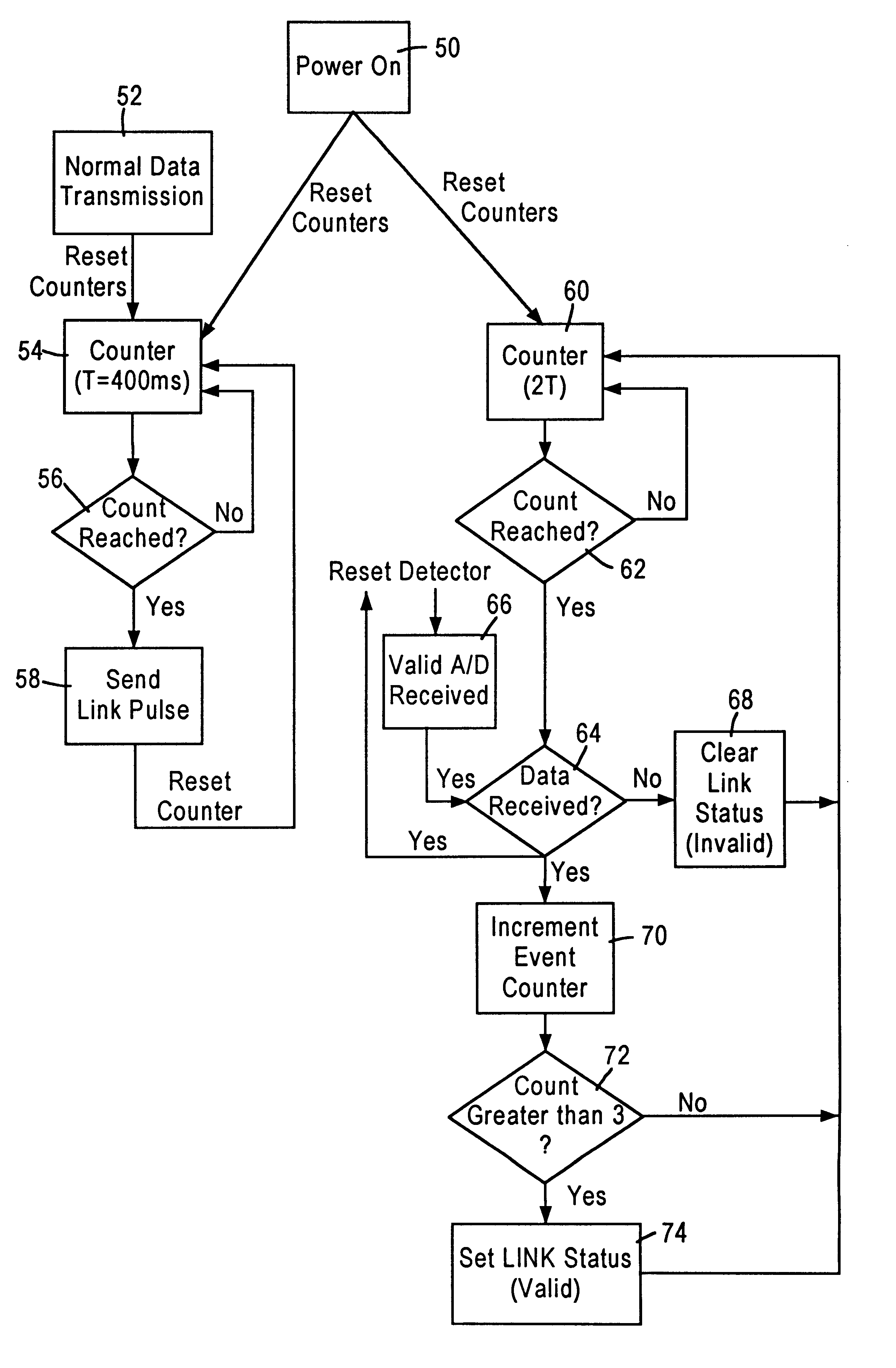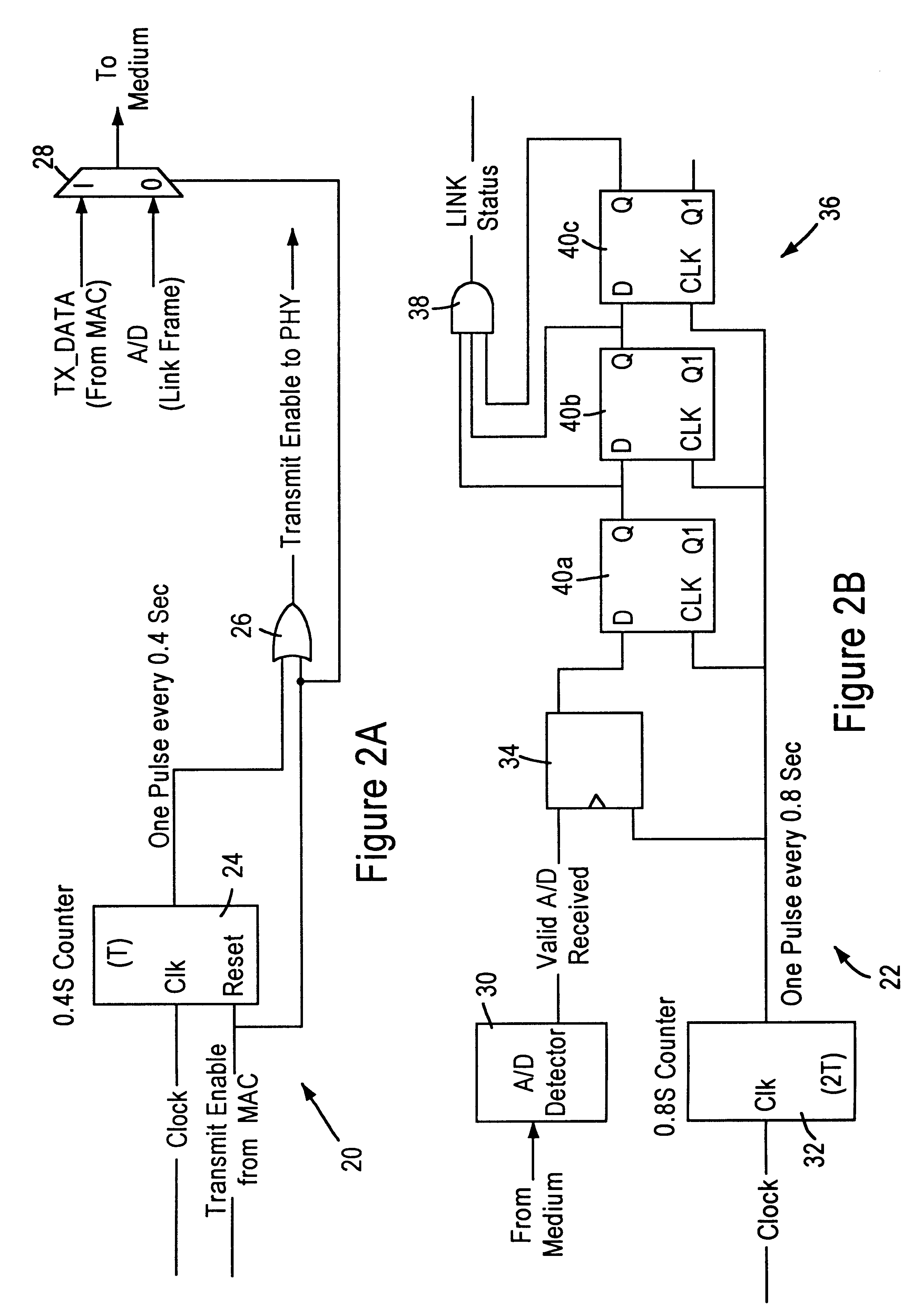Apparatus and method of determining a link status between network stations connected to a telephone line medium
- Summary
- Abstract
- Description
- Claims
- Application Information
AI Technical Summary
Benefits of technology
Problems solved by technology
Method used
Image
Examples
Embodiment Construction
FIG. 1 is a block diagram of a network 10 for transmission of data in a home networking environment according to an embodiment of the present invention.
The network 10 includes a telephone line medium 12, specifically a twisted pair medium, and network stations 14 configured for sending and receiving a link packet and a data packet on the telephone line medium 12, described below. The telephone line medium 12 includes a plurality of branch connections (not shown) to interconnect telephones, facsimile machines, etc., to a telephone network interface, for connection to a public switched telephone network. The term "home networking environment," however, refers to use of the twisted pair medium 12 within a subscriber premises. Hence, the network 10 operates independently from telephony-related services provided by the public switched telephone network.
As shown in FIG. 1, each network station 14, for example a personal computer or intelligent consumer electronics device, includes an oper...
PUM
 Login to View More
Login to View More Abstract
Description
Claims
Application Information
 Login to View More
Login to View More - R&D
- Intellectual Property
- Life Sciences
- Materials
- Tech Scout
- Unparalleled Data Quality
- Higher Quality Content
- 60% Fewer Hallucinations
Browse by: Latest US Patents, China's latest patents, Technical Efficacy Thesaurus, Application Domain, Technology Topic, Popular Technical Reports.
© 2025 PatSnap. All rights reserved.Legal|Privacy policy|Modern Slavery Act Transparency Statement|Sitemap|About US| Contact US: help@patsnap.com



